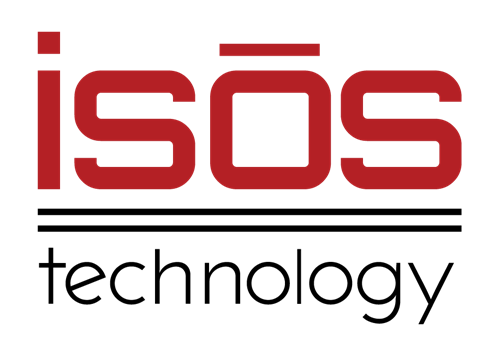 Key Takeaways
Key Takeaways
- Application integration is crucial during Atlassian migration, ensuring your ecosystem remains connected while transitioning between environments.
- Different integration types (API, data, cloud, enterprise) serve specific purposes in the Atlassian ecosystem and require tailored approaches during migration.
- A thorough assessment of your current integration landscape helps identify potential challenges and opportunities before migrating.
- A comprehensive integration strategy aligns with business goals while addressing technical requirements for maintaining system connectivity.
- Common integration challenges include data synchronization issues, API compatibility differences, and security considerations that must be proactively addressed.
- Best practices like phased implementation, robust testing, and detailed documentation contribute to successful integration outcomes during migration.
- Integration platforms provide powerful capabilities for connecting Atlassian tools with your broader technology ecosystem, simplifying development and management.
- Future-proofing your integration architecture ensures long-term flexibility and scalability as your business needs evolve.
- Isos Technology brings specialized expertise to application integration challenges, ensuring seamless connectivity while minimizing disruption during Atlassian migration.
What is Application Integration? The Key to Seamless Ecosystem Connectivity
Application integration connects different software applications cohesively, enabling data sharing and workflow automation across your technology ecosystem. During an Atlassian migration with Isos Technology, proper application integration ensures your third-party apps and systems continue functioning seamlessly in your new environment. This integration process creates a unified technology landscape where information flows efficiently between systems, eliminating data silos and manual processes that slow down your teams.
For organizations undertaking an Atlassian migration, application integration represents both a critical challenge and a strategic opportunity. With the right integration strategy, you can preserve existing functionality and enhance your ecosystem's performance, security, and scalability. Let's explore how to manage application integration effectively during your Atlassian migration journey.
Understanding the Types of Application Integration in the Atlassian Ecosystem
Application integration encompasses several approaches, each serving different needs within your Atlassian environment. Understanding these types helps IT teams develop a comprehensive integration strategy during migration.
Enterprise application integration (EAI) provides a systematic framework for connecting your core business applications with Atlassian tools. This approach enables seamless information flow between systems like CRM platforms, ERP solutions, and your Atlassian suite. EAI requires careful planning to keep these critical business connections intact during migration.
Data integration focuses specifically on synchronizing information across systems, ensuring that teams can access consistent, up-to-date data regardless of which application they're using. This integration type is significant when migrating between Atlassian deployment options, as data structures and access methods may differ between environments.
API integration leverages application programming interfaces to establish direct communication channels between software systems. The Atlassian ecosystem offers robust API capabilities that facilitate connections with third-party apps. When migrating, API integration requires thorough testing to verify that all connections function correctly in the new environment.
Cloud integration becomes especially relevant when moving from on-premises Atlassian deployments to cloud-based solutions. This integration type addresses the unique challenges of connecting cloud services with other systems, whether cloud-based or on-premises. Isos Technology's expertise in cloud migration ensures these integrations are correctly configured for optimal performance.
Middleware serves as an intermediary layer that facilitates communication between different applications. Middleware can simplify complex integrations in the Atlassian ecosystem by providing pre-built connectors and transformation capabilities. During migration, assessing your middleware requirements helps ensure continued application interoperability.
Understanding these different types of application integration allows IT teams to develop a comprehensive strategy that addresses all aspects of ecosystem connectivity during an Atlassian migration.
Assessing Your Current Integration Landscape Before Migration
Thoroughly assessing your existing integration landscape is essential to ensure a smooth transition before embarking on an Atlassian migration. This evaluation helps identify potential challenges and opportunities while creating a roadmap for integration success.
Start by cataloging all third-party apps and integrations in your current Atlassian environment. This inventory should include marketplace apps, custom-developed solutions, and connections to external systems. For each integration, document the supplier, whether a commercial product or homegrown solution, and classify it as an app or integration.
Next, evaluate team usage patterns and criticality for each integration. Determine which integrations are mission-critical ("must have"), which provide significant value ("should have"), which offer nice-to-have functionality ("could have"), and which could potentially be eliminated ("won't have"). This classification helps prioritize integration efforts during migration.
Investigate its compatibility with your target Atlassian environment for each app and integration. Key considerations include:
- Availability: Is the app or integration supported in your target environment?
- Feature parity: Do the features you rely on exist in the target environment version?
- Technical compatibility: Will the integration methods (APIs, webhooks, etc.) work in the new environment?
- Cost implications: How will licensing costs change in the new environment?
Integration architecture should also be carefully examined. Document the current data flow between systems, integration methods, and any dependencies affecting migration. This architectural understanding helps identify potential bottlenecks or compatibility issues.
Finally, security requirements for each integration will be assessed. This includes data residency considerations, compliance requirements (HIPAA, GDPR, FedRAMP, etc.), and encryption standards. Security reviews are essential when migrating to Atlassian Cloud, as each app and integration must meet organizational security standards.
By thoroughly assessing your current integration landscape, you establish a solid foundation for planning and executing a successful migration that preserves critical functionality while enhancing your overall Atlassian ecosystem.
Developing an Integration Strategy for Atlassian Migration
Creating a comprehensive integration strategy is crucial for maintaining system connectivity throughout your Atlassian migration. This strategic approach ensures that your ecosystem remains functional and efficient during and after the transition.
Begin by establishing clear integration objectives aligned with your overall migration goals. These objectives include maintaining critical business processes, improving system performance, enhancing security, and reducing maintenance overhead. Your integration strategy should support these broader migration aims while addressing the specific needs of your application ecosystem.
Prioritize integrations based on business impact and technical complexity. High-priority integrations include those supporting mission-critical processes or affecting large user populations. This prioritization helps focus resources on the most critical connections while creating a phased approach to integration implementation.
Determine the most appropriate integration method based on your target environment for each integration. Options include:
- Application links for connecting Atlassian products
- API-based integrations for direct system communication
- Middleware solutions for complex integration scenarios
- ETL (Extract, Transform, Load) processes for data-centric integrations
When migrating to Atlassian Cloud, evaluate whether to use Connect or Forge architecture for app integrations. Each approach offers different security, performance, and development complexity. Benefits: Isos Technology can help determine which architecture best suits your integration needs.
Develop a testing strategy that verifies integration functionality throughout the migration process. This should include unit testing of individual connections, integration testing of end-to-end processes, and performance testing to ensure the system meets operational requirements. Comprehensive testing minimizes disruption and identifies issues before they impact users.
Create contingency plans for critical integrations to ensure business continuity during migration. These plants include temporary manual processes, phased cutover approaches, or parallel systems during transition periods. Having these fallback options helps manage risk during complex migrations.
Finally, establish governance procedures for managing integrations in your new environment. This includes documentation standards, change management processes, and ongoing monitoring practices. Proper governance ensures your integrated ecosystem remains secure, compliant, and aligned with business needs after migration.
Developing a thoughtful integration strategy creates a roadmap for maintaining and enhancing system connectivity throughout your Atlassian migration journey.
Common Integration Challenges During Atlassian Migration
Navigating integration challenges is a critical aspect of any successful Atlassian migration. Awareness of these common hurdles helps IT teams proactively address potential issues before they impact the migration process.
Data synchronization issues frequently arise when migrating between different Atlassian environments. Differences in data structures, field mappings, and synchronization mechanisms can lead to inconsistent information across systems. To mitigate this challenge, implement robust data validation processes and consider using ETL tools or middleware to facilitate proper data transformation and loading.
API compatibility differences between Atlassian deployment options can disrupt existing integrations. Cloud APIs may offer different endpoints, authentication methods, or rate limits compared to on-premises versions. Address this challenge by thoroughly testing API integrations in a staging environment before migration and updating integration code to accommodate these differences.
Security and compliance requirements often become more complex during migration, particularly when moving to Atlassian Cloud. Cloud integrations must adhere to data residency regulations, encryption standards, and access control policies. Conducted comprehensive security reviews for each integration and worked with vendors to ensure compliance with organizational requirements.
Custom and homegrown integrations typically require significant reworking during migration. These bespoke solutions often rely on direct database access or server-side customizations unavailable in cloud environments—plan for redesigning these integrations using approved methods like REST APIs, webhooks, or Forge apps.
Integration performance can suffer during and after migration due to network latency, API rate limits, or inefficient integration patterns. Optimize integration architecture by implementing caching strategies, batch processing for large data volumes, and asynchronous communication patterns where appropriate.
User authentication and authorization across integrated systems present another common challenge. Different authentication mechanisms between on-premises and cloud environments can disrupt single sign-on experiences. Implement identity federation solutions and update authentication flows to maintain seamless user experiences across your integrated ecosystem.
Vendor support limitations may impact integration capabilities during migration. Some third-party vendors offer limited support for specific deployment options or have gaps in feature parity between versions. Maintain open communication with vendors throughout the migration process and consider alternative solutions if support issues cannot be resolved.
By anticipating these common integration challenges and developing mitigation strategies, IT teams can ensure a smoother Atlassian migration experience with minimal disruption to critical business processes.
Best Practices for Application Integration During Atlassian Migration
Implementing proven best practices ensures successful application integration throughout your Atlassian migration journey. These approaches help maintain system connectivity while minimizing disruption to business operations.
Adopt a phased integration approach rather than attempting to migrate all integrations simultaneously. Begin with simpler, less critical integrations to build experience and confidence before tackling more complex connections. This incremental strategy reduces risk and allows for adjustments based on early learnings.
Implement robust testing protocols at every stage of the integration process. Create comprehensive test cases that verify data accuracy, process flows, performance, and security across integrated systems. Automate testing where possible to enable frequent validation throughout the migration journey.
Maintain detailed integration documentation that captures technical specifications, dependencies, authentication methods, and data mappings. This documentation is a valuable reference during migration and supports ongoing maintenance in your new environment. For clarity, include diagrams illustrating integration architecture and data flows.
Leverage middleware and integration platforms when appropriate to simplify complex integration scenarios. These tools provide pre-built connectors, transformation capabilities, and monitoring features to accelerate integration implementation while improving reliability. Consider solutions that offer specific support for Atlassian products.
Establish integration governance procedures that define standards, security requirements, and approval processes for new or modified integrations. This governance framework ensures that integrations remain aligned with organizational policies and technical best practices throughout the migration process and beyond.
Prioritize user experience when designing integration solutions. Focus on maintaining consistent workflows and data visibility across systems to minimize the impact on end users. Collect feedback during testing phases to identify and address usability issues before final deployment.
Implement comprehensive monitoring for integrations to identify and resolve issues quickly. Set up alerts for integration failures, performance degradation, or data inconsistencies. This proactive monitoring approach helps maintain system reliability during and after migration.
When designing integration solutions, consider future scalability. Create flexible architectures that accommodate growing data volumes, additional integration points, and evolving business requirements. This forward-thinking approach prevents the need for significant rework as your ecosystem expands.
By following these best practices, organizations can achieve smoother Atlassian migrations with minimal integration-related disruptions and ensure their technology ecosystem supports critical business processes throughout the transition.
Integration Platform Solutions for Streamlined Atlassian Connectivity
Integration platforms offer powerful capabilities for connecting Atlassian tools with your broader technology ecosystem. These solutions simplify integration development, management, and monitoring throughout your migration journey.
Integration platform as a service (iPaaS) solutions provide cloud-based environments for building and managing integrations without extensive infrastructure investments. These platforms offer visual development tools, pre-built connectors, and robust monitoring capabilities that accelerate integration implementation. For Atlassian migrations, iPaaS solutions can facilitate connections between cloud and on-premises systems while providing scalability for growing integration needs.
API management platforms help organizations govern and optimize API-based integrations central to the Atlassian ecosystem. These platforms provide API discovery, security, throttling, and analytics capabilities. During migration, API management solutions ensure that integrations adhere to best practices and performance standards while simplifying the transition between different Atlassian environments.
Enterprise service bus (ESB) architecture creates a centralized communication framework for diverse applications. While traditional ESBs are less common in modern cloud architectures, lightweight ESB solutions can still provide value for complex integration scenarios involving multiple systems. These platforms offer message transformation, routing, and orchestration capabilities that support sophisticated integration workflows.
Event-driven integration platforms facilitate real-time data synchronization across systems by leveraging webhooks, message queues, and event streaming. This approach is particularly valuable for Atlassian integrations requiring immediate application data updates. Event-driven architectures improve system responsiveness while reducing the polling overhead associated with traditional integration methods.
Low-code integration tools enable rapid development of integration solutions with minimal custom coding. These platforms provide visual designers with drag-and-drop interfaces and configurable components that accelerate integration implementation. Flow-codetools can reduce development time for Atlassian migrations nd allow business analysts to participate in integration design alongside technical teams.
When selecting an integration platform for your Atlassian migration, consider factors such as:
- Native Atlassian connectors and compatibility
- Support your target deployment option (Cloud, Data Center, etc.)
- Security and compliance capabilities
- Scalability and performance characteristics
- Total cost of ownership, including licensing and operational expenses
The right integration platform streamlines connectivity across your Atlassian ecosystem while providing the flexibility to adapt to changing business requirements. Isos Technology can help evaluate and implement the most appropriate integration solutions for your migration scenario.
Future-Proofing Your Integration Architecture Post-Migration
Establishing a forward-thinking integration architecture after your Atlassian migration ensures long-term flexibility, scalability, and resilience for your technology ecosystem. This strategic approach helps organizations adapt to evolving business needs while maximizing their Atlassian investment.
Adopt an API-first integration strategy that prioritizes well-designed, documented interfaces for system communication. This approach creates a flexible foundation for future integrations, reducing dependencies on specific implementation details. Develop comprehensive API documentation and establish governance processes to maintain API quality and consistency over time.
Implement a microservices-based integration architecture where appropriate to enhance modularity and scalability. Breaking complex integrations into smaller, purpose-specific services allows for independent deployment and scaling while simplifying maintenance. This architectural pattern aligns well with Atlassian's cloud strategy and supports incremental enhancement of your integration landscape.
Establish a center of excellence (CoE) for integration management to centralize expertise and governance. This team maintains integration standards, guides new integration projects, and ensures alignment with organizational objectives. The CoE also facilitates knowledge sharing across teams and promotes integration of best practices throughout your organization.
Develop a robust monitoring and observability framework for your integration ecosystem. Implement tools that provide visibility into integration performance, data flows, and error conditions. This comprehensive monitoring approach enables proactive management of integration health and facilitates rapid troubleshooting when issues arise.
Create an integration roadmap aligned with your broader technology strategy. This forward-looking plan should identify opportunities for integration enhancement, consolidation of redundant connections, and adoption of emerging integration technologies. Review and update this roadmap regularly to reflect changing business priorities and technological advancements.
Establish vendor evaluation criteria for new integration tools and services. These criteria should address compatibility with your Atlassian environment, security requirements, performance characteristics, and total cost of ownership. Clear evaluation guidelines ensure that new integration technologies align with your architectural vision and business needs.
Implement continuous integration and deployment (CI/CD) practices for integration development. These automated approaches accelerate the delivery of integration enhancements while maintaining quality and reliability. CI/CD pipelines with comprehensive testing reduce the risk associated with integration changes and support more frequent updates to your integration ecosystem.
By adopting these future-proofing strategies, organizations create resilient integration architectures that support business agility while maximizing the value of their Atlassian investment. This forward-thinking approach transforms integration from a technical necessity into a strategic business enabler.
How Isos Technology Simplifies Application Integration During Atlassian Migration
Isos Technology brings unparalleled expertise to application integration challenges during Atlassian migrations. Our comprehensive approach ensures seamless connectivity across your technology ecosystem while minimizing disruption to critical business processes.
Our integration assessment methodology provides a thorough evaluation of your current application landscape. We catalog existing integrations, analyze usage patterns, and identify potential migration challenges. This detailed assessment creates a solid foundation for integration planning and helps prioritize efforts based on business impact and technical complexity.
Isos Technology delivers customized integration strategies that are aligned with your specific migration goals. Whether you're moving between Atlassian deployment options or consolidating multiple instances, we develop tailored approaches that address your unique integration requirements. Our strategies incorporate industry best practices while acknowledging the specific characteristics of your technology environment.
Our technical expertise spans the full range of integration methods relevant to the Atlassian ecosystem. From application links and REST APIs to middleware solutions and event-driven architectures, we implement the most appropriate integration approaches for your needs. This technical versatility ensures optimal connectivity regardless of your integration complexity.
We provide comprehensive testing services to verify integration functionality throughout the migration process. Our testing protocols cover data accuracy, process flows, performance characteristics, and security considerations. This thorough validation approach identifies and resolves integration issues before they impact end users.
Isos Technology offers ongoing support and optimization for your integrated Atlassian environment. After migration, we help fine-tune integration performance, address emerging challenges, and implement enhancements that increase business value. This continued partnership ensures your integration architecture remains aligned with evolving business needs.
Our knowledge transfer and documentation practices ensure your team can effectively manage integrations after migration. We provide detailed technical documentation, conduct training sessions, and establish governance frameworks that support long-term integration success. This comprehensive knowledge sharing empowers your organization to maintain and enhance your integrated ecosystem.
By partnering with Isos Technology for your Atlassian migration, you can access specialized integration expertise that simplifies complex challenges and accelerates your journey to a more connected, efficient technology environment. Our outcome-driven approach ensures that your integrated ecosystem supports your business objectives while providing the flexibility to adapt to changing requirements.
FAQs About Application Integration During Atlassian Migration
What is the difference between application integration and data integration during Atlassian migration?
Application integration connects different software systems to work cohesively, enabling end-to-end business processes across multiple applications. This includes synchronizing workflows, sharing functionality, and creating unified user experiences. Data integration, while an application integration component, explicitly addresses the movement, transformation, and synchronization of information between systems.
During Atlassian migration, application integration ensures that your entire ecosystem functions correctly, while data integration ensures that information remains consistent and accessible across systems. Both are critical aspects of a successful migration strategy, with application integration providing the broader framework and data integration addressing specific information flow requirements.
How does cloud integration differ from on-premises integration in the Atlassian ecosystem?
Cloud integration introduces several key differences from on-premises integration in the Atlassian ecosystem. First, cloud environments typically offer limited access to underlying infrastructure and databases, requiring API-based integration approaches rather than direct database connections. Second, cloud integrations must address additional security considerations, including API authentication, data encryption, and compliance with cloud security policies.
Additionally, cloud integrations often face API rate limits and performance considerations related to internet connectivity and data transfer volumes. Integration architecture for Atlassian Cloud typically leverages event-driven patterns and webhooks to optimize performance and resource utilization. Finally, cloud integrations benefit from Atlassian's continuous delivery model, with new capabilities regularly becoming available without requiring manual upgrades.
What are the most common integration challenges when migrating from Atlassian Server to Cloud?
Organizations frequently encounter several integration challenges when migrating from Atlassian Server to Cloud. Custom integrations developed for the server often rely on direct database access or server-side customizations unavailable in cloud environments. These typically require significant redesign using approved Cloud integration methods like REST APIs or Forge apps.
Third-party app compatibility presents another common challenge: not all Marketplace apps offer Cloud versions with feature parity to their Server counterparts. Authentication and authorization mechanisms differ between Server and Cloud, potentially disrupting single sign-on implementations and user management integrations. Data volume limitations and API rate restrictions in Cloud environments may also impact integration performance for high-volume data synchronization scenarios.
Finally, organizations must adapt to different integration, development, and deployment processes in Cloud environments, with more emphasis on continuous delivery and less direct control over the underlying infrastructure. Addressing these challenges requires careful planning, thorough testing, and often, architectural adjustments to existing integrations.
How should we prioritize integrations during an Atlassian migration?
Prioritizing integrations during Atlassian migration requires balancing business impact with technical complexity. Start by categorizing integrations based on criticality: "must-have" integrations supporting core business processes should receive the highest priority, followed by "should-have" integrations that provide significant value, "could-have" integrations offering nice-to-have functionality, and finally, "won't" integrations that could potentially be eliminated.
Within these categories, consider user impact—prioritize integrations affecting larger user populations or critical teams. Also, evaluate technical complexity and risk; simpler integrations with lower migration risk might be implemented earlier to build confidence and experience. Dependencies between integrations should also influence prioritization, establishing foundational connections before dependent integrations.
Finally, align integration priorities with your overall migration timeline and business calendar. Critical integrations should be scheduled during periods of lower business activity, and adequate testing time should be allocated based on integration complexity and business impact.
What role does middleware play in Atlassian's integration architecture?
Middleware is crucial in Atlassian's integration architecture. It provides an intermediary layer that facilitates communication between different applications. This technology simplifies complex integration scenarios by offering pre-built connectors, data transformation capabilities, and centralized integration flow management. Middleware can connect Atlassian products with external systems like CRM platforms, ERP solutions, and custom applications in the Atlassian ecosystem.
Middleware supports various integration patterns relevant to Atlassian environments, including request-response interactions, event-driven communication, and batch data processing. It helps address common integration challenges such as different data formats, varying communication protocols, and disparate authentication mechanisms. During Atlassian migration, middleware can provide continuity by maintaining existing integrations while the underlying systems change.
Modern integration platforms often combine middleware capabilities with cloud-native features, offering traditional enterprise service bus functionality, API management, event streaming, and low-code development tools. This comprehensive approach supports diverse integration needs throughout the Atlassian ecosystem while providing the flexibility to adapt to evolving requirements.
How can we ensure security and compliance across integrated systems during migration?
Ensuring security and compliance across integrated systems during Atlassian migration requires a comprehensive approach addressing multiple integration security aspects. Begin with a thorough risk assessment for each integration, identifying sensitive data flows, authentication mechanisms, and potential vulnerability points. Develop security requirements based on this assessment and organizational compliance standards (GDPR, HIPAA, FedRAMP, etc.).
Implement secure authentication methods for all integrations, preferably using OAuth 2.0 or similar token-based approaches rather than embedded credentials. Encrypt sensitive data both in transit and at rest, and establish data classification policies that govern how different types of information can be shared between systems. Apply the principle of least privilege by ensuring that integrations access only the specific data and functionality required for their purpose.
Conduct security reviews for third-party apps and integration platforms, examining their security practices, compliance certifications, and data handling procedures. Implement comprehensive logging and monitoring for all integrations to detect unusual patterns or potential security incidents. Finally, develop a security testing strategy that includes vulnerability scanning, penetration testing, and compliance verification for your integrated ecosystem.
What is the role of API integration in the Atlassian ecosystem?
API integration is the foundation for connectivity within the Atlassian ecosystem, enabling seamless communication between Atlassian products and third-party systems. Atlassian provides comprehensive REST APIs that expose core functionality for external consumption, allowing developers to create custom integrations that extend and enhance the platform's capabilities. These APIs support operations ranging from simple data retrieval to complex workflow automation across multiple systems.
API integration facilitates various use cases in the Atlassian ecosystem, including synchronizing user data between systems, extending Atlassian functionality with custom applications, integrating with external tools like CI/CD pipelines or monitoring solutions, and building reporting dashboards that aggregate data from multiple sources. The API-first approach aligns with modern integration best practices and supports the development of scalable, maintainable integration solutions.
API integration becomes particularly important during Atlassian migration as organizations transition between deployment options or consolidate instances. Well-designed API integrations provide flexibility and resilience during these transitions, allowing connections to be updated or reconfigured without disrupting core business processes. Isos Technology leverages Atlassian's robust API capabilities to create integration solutions that support your migration goals while maintaining system connectivity.
What is the best approach for testing integrations during Atlassian migration?
The most effective approach for testing integrations during Atlassian migration combines comprehensive test coverage with a phased methodology that aligns with your migration timeline. Begin by developing detailed test cases that address functional requirements, data accuracy, performance expectations, error handling, and security considerations for each integration. These test cases should cover both normal operations and edge cases to ensure robust validation.
Implement a multi-stage testing process that includes unit testing of individual integration components, integration testing of end-to-end processes, performance testing under expected load conditions, and security testing to verify compliance with organizational standards. Automate testing where possible to enable frequent validation throughout the migration process, particularly for critical integrations that support core business functions.
Create a staging environment resembling your production setup, including realistic data volumes and integration configurations. Test integrations in this environment before migrating to production, and conduct user acceptance testing with stakeholders to verify that business requirements are met. Finally, a monitoring strategy for the post-migration period should be implemented to quickly identify and address any integration issues in the production environment.
Sources:
Sign up to receive more great content
Learn more about Atlassian and how Isos can help by signing up to receive our latest blogs, eBooks, whitepapers and more.













